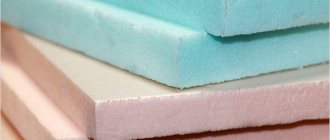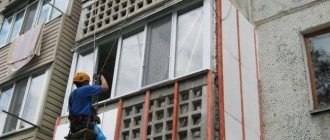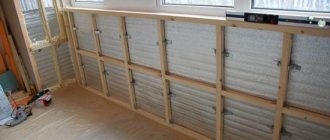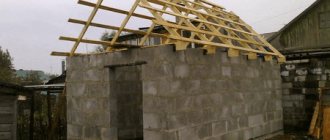Insulating windows before winter is a mandatory procedure performed by owners of wooden frames. This allows you to increase the temperature in the house by 8-15 degrees and save on heating. There are many ways to insulate wooden windows. To do this, you can use special sealants and seals, or use improvised means.
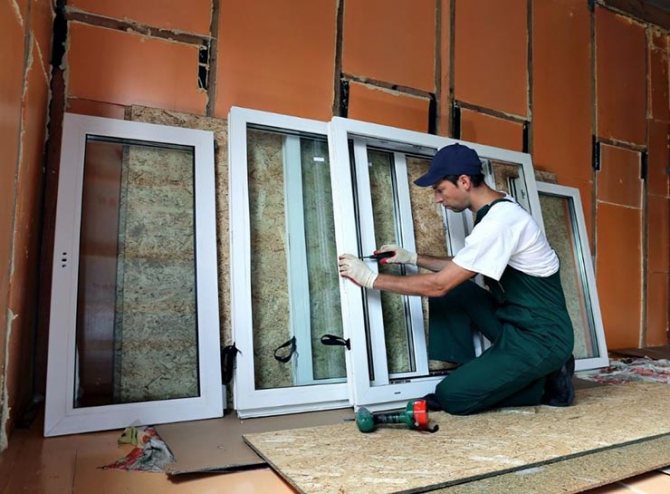
Wooden frames must be insulated before cold
Preparatory stage: finding problem areas
Depending on how and from what types of wood the frames were made, how the glasses were inserted into them, how long and intensive the operation was, the following main problems of wooden windows are distinguished:
- cracks and gaps between frames and jambs or a window sill. They arise as a result of skewing of frames, drying out of wood, shrinkage of the house. Serve as a source of drafts and dampness;
- gaps between jambs (frame) and walls;
- loose closing of frames or inability to completely close. The reason is also skewed frames and / or jambs, window sill. Leads to a complete lack of protection of the premises from heat losses;
- cracks, holes and cracks in frames, voids in wood;
- loose adhesion of glasses to the frame. Causes drafts, cold feeling from the window. Significantly increases the heat loss of the room;
- insufficient glass thickness or the presence of only one glass. With very thin (1.5 ... 2 mm) glass, high thermal conductivity (0.75 W / m * degree) reduces the resistance to heat loss by 30 ... 50% compared to the normal thickness of window glass (3 ... 4 mm). Single glass glazing is permissible only for non-residential premises.
Thermal imaging will help in identifying the sources of drafts and cold.


Once the underlying problem - or set of problems - has been identified, solutions can be sought.
Thermal insulation with environmentally friendly materials
Rubber, PVC seals are not always made of high-quality materials, therefore, for those who are worried about their health, natural linen tape is the best means of insulation. The material is intended for sealing wooden windows, doors, vents, openings.
The advantages of linen insulation include:
- made from environmentally friendly raw materials;
- effectively protects against heat loss and drafts;
- the material is little affected by moisture;
- does not collapse under the influence of frost and sun;
- has natural ventilation, so the microclimate is not disturbed in the room;
- has a long service life.


Insulation is sold in the form of a tape up to 5 cm wide, it is laid in places where the shutters do not fit tightly to the frame, slopes, window sill.
Thermal insulation technology for wooden windows
All methods of insulating old wooden windows can be conditionally divided into two groups: seasonal (without repair of structures) and capital (with the repair of frames, window sills, replacement or new sealing of glass and other measures).
Seasonal insulation
There are three main options in this group.
Protection of glass and frame joints.
It is produced only from the inside, using sealant or narrow strips of paper, cloth or tape, as well as masking tape. If the method with tape sticking - paper or woven - is chosen, then such tape is glued to the glass-frame joint so that it goes on the glass and wooden structure by 2 ... 5 mm. For paper and fabric strips, paste or soap solution is used, scotch tape or masking tape is attached using its own adhesive layer.The use of scotch tape is undesirable, as it leaves stubborn glue residues on glass and wood.
Sealing the joint between the glass and the frame with a sealant is carried out either with silicone-based materials or with window putty. A clear sealant gives the best results and is less visible.
Protection of the joints of the glazing frame with jambs and window sill.
It is also performed from the inside, for this they apply:
- paper - in the form of special paper tapes with an adhesive layer or cut strips of newspapers or writing sheets. When using ordinary paper, gluing is carried out on a soapy solution or paste;
- fabric - strips of fabric are glued with a soap solution, if a bandage is used, gluing is in several layers;
- technical or ordinary cotton wool, rags - the material is tightly hammered into the gap between the frame and the jamb (window sill);
- recycled paper. It is not difficult to insulate wooden windows in an apartment using such a "putty", paper pieces soaked in a solution of glue or paste are tamped tightly into all cracks. It is important to remember that printed newsprint can stain light frames;
- foam rubber - strips of material are pushed into the gap between the flaps and the frame using a narrow blunt object (screwdriver, table knife, ruler);
- a special seal in the form of a tubular strip of rubber or foam rubber, usually with an adhesive layer. The seal is glued to the part of the frame adjacent to the jambs when the window is open. Once closed, the tube deforms and tightly blocks the outside air flow.


A combined version of protection is also used, in which the gaps are filled with cotton or sealant, a sealant, and then sealed on top with paper or fabric tape.
Thermal glass protection.
A thin transparent film is glued to the water on the entire surface of the glass, going over the frame. Due to the ability to reflect infrared (thermal) radiation, the film prevents heat loss, keeping the heat in the room.


It is mounted with the metallized side outward.
Do-it-yourself capital insulation of wooden windows
For a better and more durable result, it will be necessary to partially dismantle the window. It is better to do this during major or at least cosmetic repairs.
- The frames are removed from the hinges.
- The hinges, the strength of their fastening and performance, the accuracy of the position are checked. Parts are replaced or re-attached if necessary.
- The condition of the frames is checked, the presence of cracks, holes and cracks in them. This may require the removal of the decorative coating - varnish or paint.
- Seal gaps in wooden windows with wood putty, alabaster, paraffin or sealant. If you plan to paint or varnish wooden frames in the future, it is better to choose a putty or alabaster, since varnish-and-paint coatings do not fit well on a sealant or paraffin.
- Check the condition of the jambs and the window sill, the presence of gaps between them and the wall. Seal the found voids in the wall with foam or cement-sand mortar, gypsum, alabaster or other repair material. The sealed fragments are hidden with platbands.


- Insulate the slopes from the inside using any modern heat-insulating material and drywall. At the same time, this will help give the inside of the window a more attractive look and simplify the decorative trim of the slopes.
- Install the frames in place and remove the wooden glazing beads and remove the glass. If there is no need to replace the glass, its contact (in contact with the frame) surfaces are cleaned like seats in the frame. After that, the place of installation of the glass along the contour is treated with a sealant, after which the glass is put in place and fixed with a new glazing bead. As a rule, additional thermal insulation of the glass and frame joints is not needed.
Important: glass change and re-sealing is performed with the frame in place and closed! If you change the glass with the frame exposed or simply open, there is a risk of it skewing and damage to the glass during installation.
In case of insufficient thickness / thermal insulation of the wall above / below / next to the window, internal or external thermal insulation of the entire wall may be required.
Additional methods of insulation - gluing joints, installing a seal on the frame, installing a heat-saving film on glass - only increase the efficiency of the main repair work, but do not replace them.
Paper for pasting windows
More precisely, paper putty. This is the cheapest method, as it only requires a selection of old newspapers and water to seal the windows. To increase the effectiveness of the putty, you can add 2 parts of crushed chalk or 1 part of clay to it. The resulting mass is characterized by high plasticity, which makes it easy to seal even the smallest cracks. The window can be easily cleaned from putty during work (while it remains wet). Insulation of windows with paper is an effective way, but only for one season, in addition, a papered window does not make it possible to open the sashes in winter. With warming, the putty is removed from the cracks, and the window is washed out.
Price: 0 rub.
Pros: Free and easy.
Cons: the need for annual repetition of work, there is no way to open the sealed window, it is not aesthetically pleasing and the presence of additional decor in the form of gluing paper or fabric strips.
How to insulate old wooden windows using Swedish technology
The listed methods of thermal insulation of a room by sealing windows are mainly applicable to dilapidated, not too high quality wooden frames. However, for houses of the "old foundation" with windows made of high quality and expensive wood for a long time, you can apply a more modern and effective "Swedish" or "groove" sealing technology.
The essence of the technology lies in the installation of a special insulation that is fastened in a groove around the perimeter of the sash and frame. The groove for the insulation is selected using a cutter, the sashes, if necessary, are adjusted so that a tight, but not difficult, closing of the window is ensured.


Depending on the frame design, not one, but two or three seal contours can be installed.
The type of seal (profile) depends on the size of the gap between the frame and the window sash. This gap is determined along the entire perimeter, since in different places it can differ 2 ... 4 times (for example, between the top and bottom of the window). This can be done with a piece of plasticine wrapped in plastic. It is clamped between the frame and the sash, the size of the gap is estimated by the height of the ridge.
EuroStrip profile marking for gaps of size:
- 2 ... 3.5 mm, E - tubular;
- 3 ... 5 mm, P - tubular with a round or figured section;
- 3 ... 12 mm, D - shaped tubular.
This type of insulation is optimal if a generally high-quality wooden window is blowing and it only needs to be compacted around the perimeter. The sealing process is shown in more detail in the video.
The advantage of the method is the possibility of free opening of the sashes at any time of the year (as opposed to windows sealed or sealed with foam rubber, cotton wool, sealants), as well as the preservation of the natural microclimate.
Using Swedish technology, you can insulate wooden windows with your own hands, thereby reducing the cost of installation work and allocating large funds for the purchase of a high-quality insulating profile and new window fittings.
Energy saving film for glass insulation
How to insulate wooden windows and prevent heat loss in the house? In addition to the above methods, you can use a heat-reflecting film. This material is cut to the required size and glued to the glass from the inside of the room.The film does not allow heat to escape, protects windows from condensation and dust accumulation, ensures that the room temperature rises by at least 4–7 ° C, and saves on heating costs.
Insulation for windows is fixed to a plastic or wooden frame with tape so that no air bubbles remain in the places of gluing. Then the film is heated with an ordinary hair dryer, under the influence of hot air, the thermal protective agent is stretched and completely smoothed.
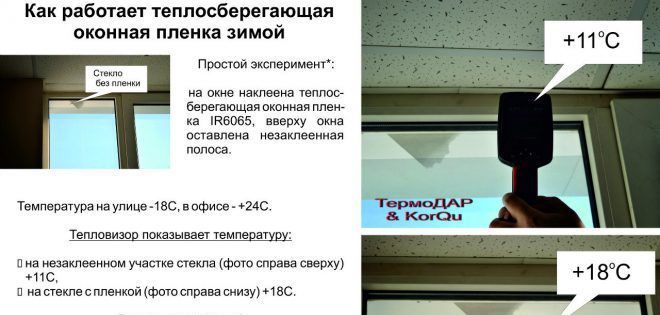

The set includes an energy-saving film folded in two layers, a special double-sided tape and instructions for use. The material is transparent, colored, with a decorative pattern, it is used to insulate wooden or plastic windows. In winter, it prevents heat loss, and in summer it protects against heat and scorching ultraviolet rays. At the same time, the normal visibility of the glasses is maintained, and sufficient sunlight enters the room.
[ads-pc-3]
Conditions for proper insulation of wooden windows
Most of the insulation work is done in the first autumn months, before the indoor temperature drops below 15 degrees Celsius. It is very problematic to insulate housing well in cold weather. On very cold frames, the soapy water, paste or adhesive layer of the finished materials will not adhere.
Extreme situations
As an emergency measure, you can use the sealing of cracks with cotton wool, foam rubber or homemade sealant (papier-mâché mass based on newsprint or writing paper with paste), installation of a heat-saving film on glass. In extreme cases, it is permissible to install a dense polyethylene film (one- or two-layer) over the entire window area, including frames, with an approach to the slopes from the inside. Such a film is attached using ordinary or double-sided tape. The disadvantage of this method is a strong decrease in illumination, but when the heating is turned off, record frosts or a crack on the glass (broken glass), this method may be the only rational one.
With a sharp drop in room temperature and the impossibility of carrying out normal thermal insulation of windows, it is worth remembering also about the old protective device - very dense, heavy curtains. They will reduce the flow of cold from the glass and help, at least partially, get rid of drafts. Roller shutters can serve the same purpose.
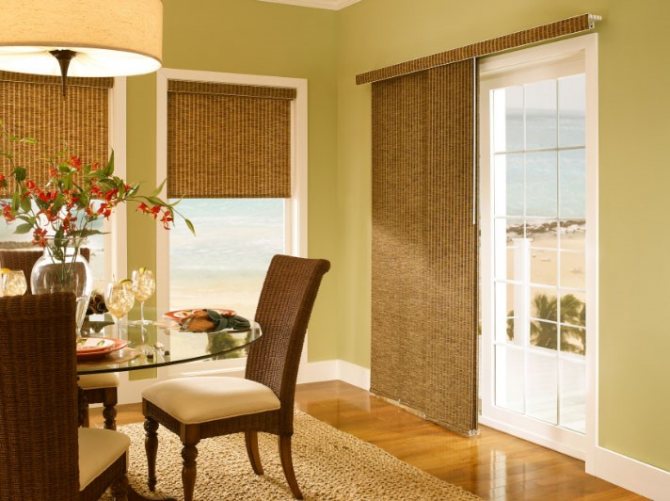

Features of sealing plastic windows
If you want to know how to insulate plastic windows, then the structure is pretty shabby, since only the installed packages do not need additional sealing. Drafts are often caused by:
- wall shrinkage and cracking;
- wear of rubber gaskets or loss of their elasticity;
- violation of sealing between frames and slopes.
The following work may be required: insulate the window sill, adjust the fittings, replace the rubber seals, or, as described above, the installation of slopes.
The given recommendations and a video with a step-by-step description of the work will allow you to enjoy the view from the window without feeling the cold and drafts.
Construction putty for windows
Allows to seal the glass seat. First you need to remove the old putty or glazing bead, apply a new compound, level and paint, or cover with glazing beads and paint. In this case, the putty is applied in a thinner layer, which reduces its effectiveness.
Approximate cost: 30 rubles / pack.
Advantages: relative cheapness of putty, hygroscopicity.
Disadvantages: laboriousness of work, the need to periodically update the putty. Does not allow protection against blowing between the frame and the sash.
We use tubular profiles for insulation
There is a very wide variety of insulation materials. More modern are special tubular profiles, often called gaskets. They come in a variety of sizes and shapes.
P, D spacers are for large crevices, and E shaped spacers are for small crevices. Tubular profiles have the following advantages:
- invisible;
- firmly attached to one side of the frame: the window can be freely opened and closed, while the tightness is not disturbed;
- service life is about 5 years.
When working with heaters, do not tighten it, since some of them must be glued at a temperature of at least +10. The gluing procedure requires accuracy and patience, so it takes a lot of time.
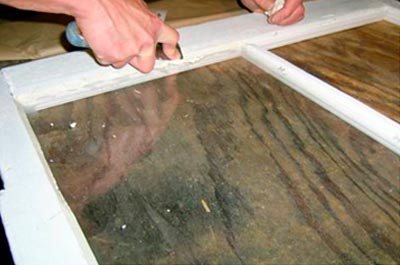

You can glue the windows with various materials for gaskets: rubber, foam rubber, polyethylene foam, polyurethane, polyvinyl chloride (PVC). In addition, heaters are divided into two types: self-adhesive and those that must be glued with glue. Self-adhesive is more convenient to glue: the protective film is removed and the insulation can be glued.
When buying a self-adhesive insulation, you should pay attention to the expiration date of the glue, which is indicated on the package. If it has expired, then the gasket may either not stick, or quickly fall off after gluing. It is safer to glue the insulation with your own hands. All you have to do is choose the right glue.
The most suitable glue is silicone sealant: it is not afraid of moisture, it stretches and shrinks well in any state. Therefore, it will hold the gasket with repeated slamming.
Silicone sealant can be used as insulation by filling the gaps evenly with a pistol.
After the silicone has hardened, the excess is cut off with a sharp knife. This work must be done carefully so as not to damage the paint on the window. Similarly, you can use polyurethane foam. However, when using it, you need some experience, since it forms a layer that is too thick, which is not suitable for narrow window gaps.
Some qualities of PVC insulation are better than rubber ones: they are frost-resistant, less brittle, do not deform and do not crumble. But rubber wears out less. When choosing rubber heaters, you should choose softer types, since they can withstand deformation a large number of times.
The material of the seal must be indicated on the packaging. All these heaters can be purchased at the construction market or in a hardware store.
Sealant and putties
The first step will be cleaning and degreasing the window. Next, remove the glazing beads. The sealant is applied between the frame and the glass, the window sill. You will need a special tool, a construction gun, to ensure even application.
The sealed area must be completely dry. At the end of the procedure, insert the glazing beads back. Putty works the same, but it will take more time and your efforts. Buy it at any hardware store.
"Paste"
You will need flour and water to make your own gum. For 1 liter of water, take half a glass of flour, mix and put on fire. After the mixture has cooled, it can be stored for no more than 2 days.
Sun protection
Sunlight can sometimes not only please, but also create discomfort, especially in summer. To make their life easier in the summer, many are in a hurry to seal the windows from the hot sun. You can resort to a procedure such as toning, but there are cheaper ways.
For example, why not cover the windows with foil? Purchase regular food foil. It can be glued both indoors and outdoors. The second option is more effective, since sunlight is reflected, almost without penetrating the apartment.
We insulate plastic windows
With the onset of the cold season, the question of preserving heat in the room is quite acute, especially if the windows are wooden.For additional insulation, methods are used that have been proven for years and decades, effective since the time when plastic windows were not yet invented, how to seal the windows for the winter is decided on the spot. It depends on the material available.
First, the windows themselves need to be prepared. First, you need to peel off all the old paint with a spatula, which peels off and comes off with scales. Seal all holes, cracks and holes in the frames. Lay a synthetic winterizer or cotton wool between the sashes and slopes, you can do this with tow, wet crumpled newspapers are also suitable, which, as they dry, straighten and fill the cavities in the windows. Coat the joints of the frame and glass with putty, plasticine or glue each glass with a narrow transparent tape on both sides. After that, you need to glue everything additionally with strips of cotton fabric or paper.
The first way
Necessary materials:
- Old sheet;
- soap;
- water.
A cotton or linen sheet must be torn into strips 8-10 cm wide. You need to prepare a lot of such strips, as many as there are cracks in windows and window sills, as many strips are needed. It is better to clean the sill and window and wipe dry. Prepare a basin of water. A strip of fabric is laid out over the entire length of the window sill and coated with a piece of soap dipped in water. Repeat the action two or three times until the fabric is saturated with soapy water. Pick up by one end and glue to the upper edge of the window. Then perform the same operation with all four sides and additionally at the junction of the window frames. Windows are glued tightly for the winter, except for the vents. Thus, the space between the frames and inside the room is better closed.

